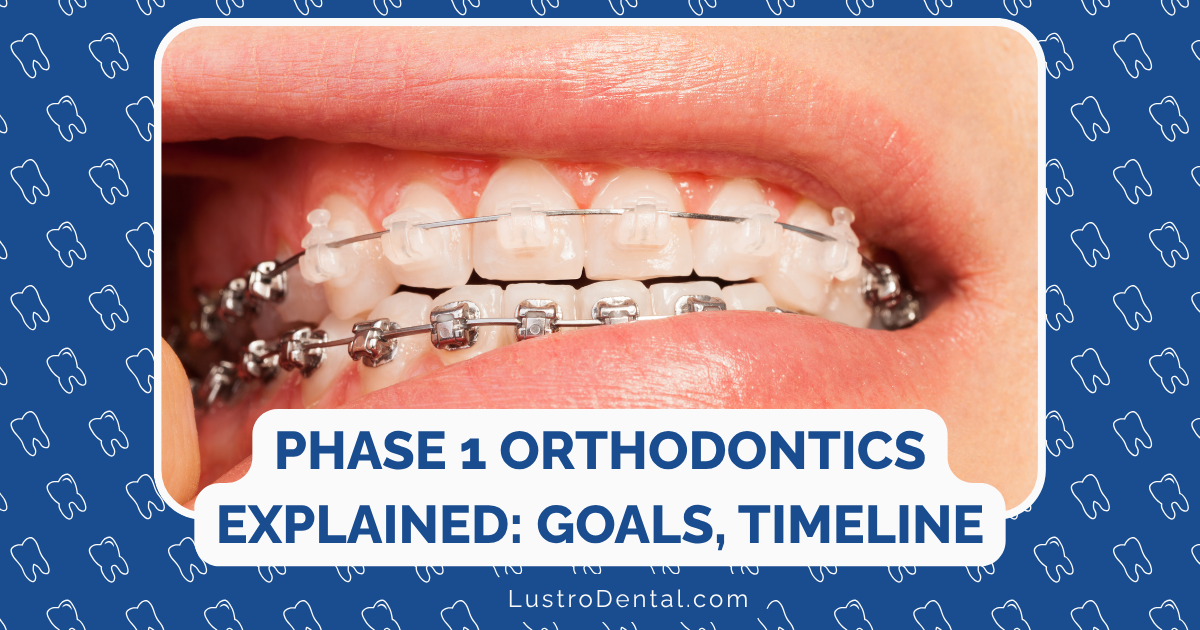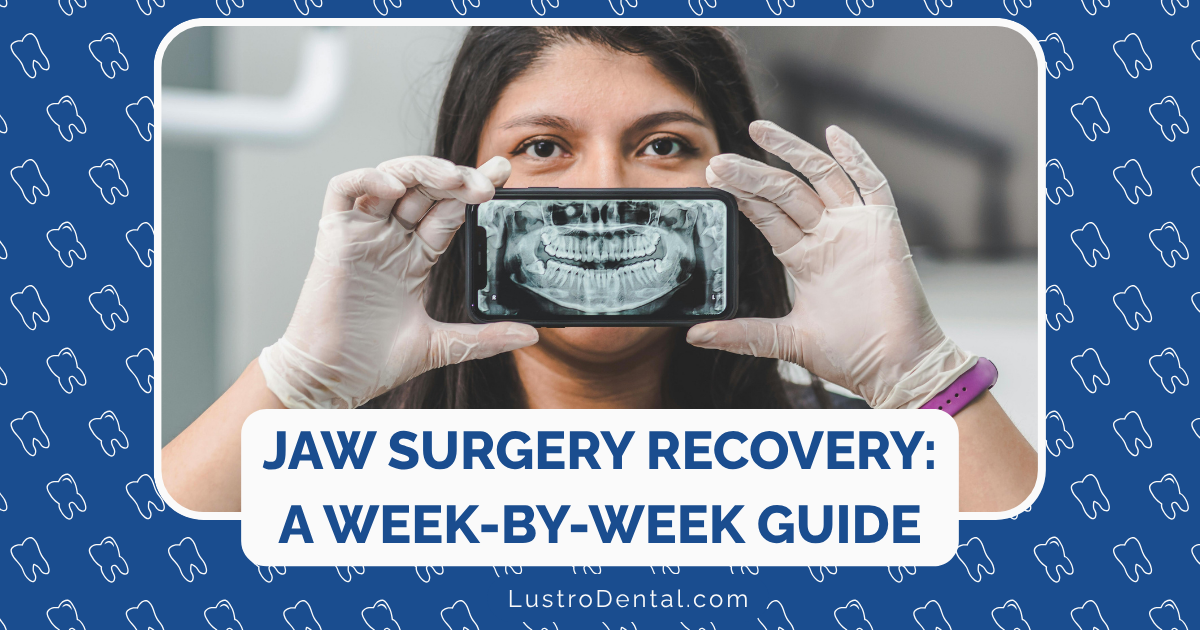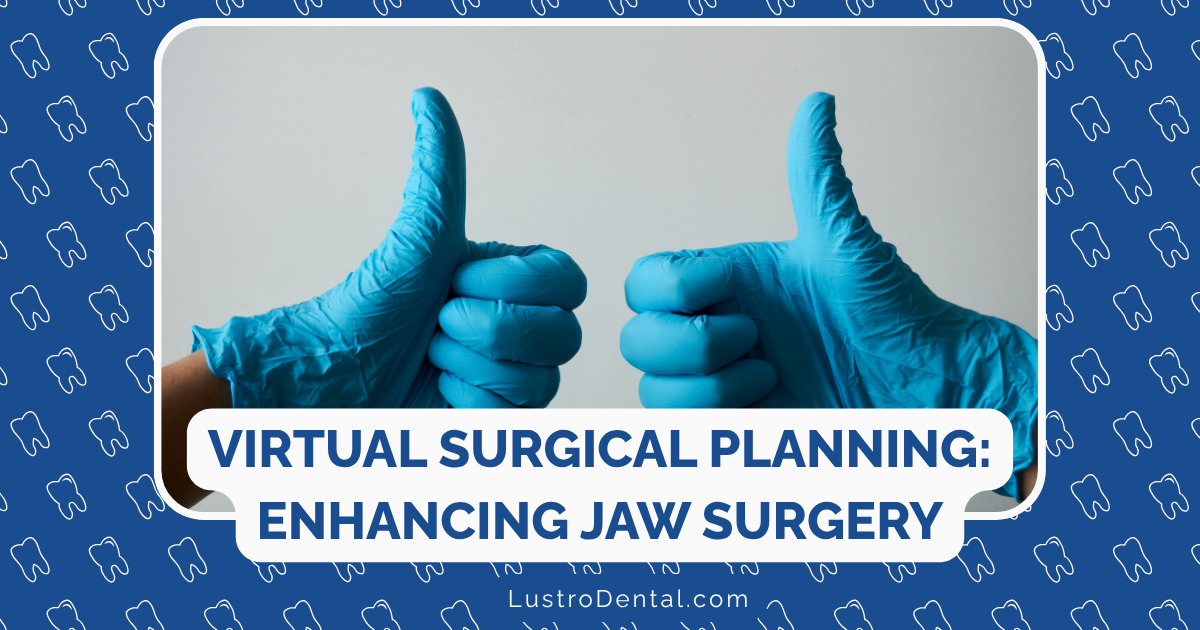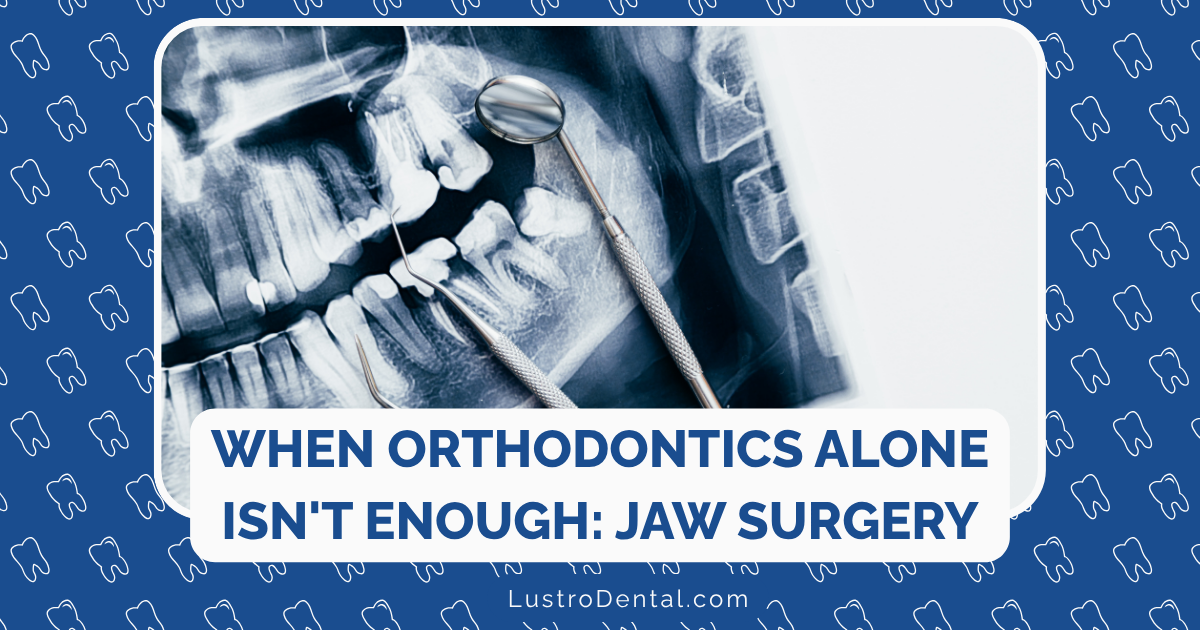Phase 1 Orthodontics Explained: Goals, Timeline, and Expected Outcomes

When most people think of orthodontic treatment, they picture teenagers with a full set of braces. However, orthodontic care often begins much earlier, with what professionals call “Phase 1” or “interceptive” orthodontics. This early intervention approach has transformed how we address developing orthodontic issues, potentially saving children from more extensive treatment later in life.
As an orthodontist who’s guided thousands of young patients through Phase 1 treatment, I’ve witnessed firsthand the remarkable benefits of addressing certain orthodontic issues during this critical developmental window. In this comprehensive guide, I’ll explain everything parents need to know about Phase 1 orthodontics—from its goals and timeline to the expected outcomes and common treatment approaches.
What Is Phase 1 Orthodontics?
Phase 1 orthodontics is an early intervention treatment approach designed to address developing orthodontic problems while a child still has a mixture of primary (baby) and permanent teeth. Unlike comprehensive orthodontic treatment (Phase 2), which focuses on aligning all permanent teeth, Phase 1 targets specific structural, functional, or developmental issues that are best addressed while a child is still growing.
The American Association of Orthodontists (AAO) recommends that all children have their first orthodontic evaluation by age 7. This timing is strategic—it allows orthodontists to identify potential problems early, when intervention can be most effective.
Dr. Sarah Johnson, a board-certified orthodontist at Metropolitan Orthodontics, explains: “Phase 1 treatment takes advantage of a child’s natural growth processes. We can guide jaw development and create proper space for emerging permanent teeth, potentially preventing more complex problems from developing later.”
Who Needs Phase 1 Orthodontic Treatment?
Not every child requires Phase 1 treatment. In fact, most orthodontic issues can be effectively addressed with a single phase of treatment during adolescence. However, certain conditions benefit significantly from early intervention:
Skeletal Discrepancies
- Crossbites: When the upper teeth sit inside the lower teeth when biting
- Underbites: When the lower jaw protrudes beyond the upper jaw
- Severe overbites: Excessive horizontal overlap of the front teeth
- Asymmetrical jaw growth: When one side of the jaw grows differently than the other
Dental Issues
- Severe crowding: Insufficient space for permanent teeth to erupt properly
- Protruding front teeth: Front teeth that stick out, increasing risk of trauma
- Impacted teeth: Teeth unable to erupt due to blockage from other teeth
- Early or late loss of baby teeth: Disruption to the normal eruption sequence
Functional Problems
- Mouth breathing: Chronic breathing through the mouth instead of the nose
- Thumb sucking or other habits: Persistent habits affecting dental development
- Speech difficulties: Related to tooth position or jaw alignment
- Difficulty chewing or biting: Functional issues with eating
According to research published in the Journal of Clinical Orthodontics, approximately 25-30% of children evaluated by orthodontists are candidates for Phase 1 treatment. The decision to proceed with early intervention should be based on the specific needs of each child and the potential benefits of addressing problems early rather than waiting.
Goals of Phase 1 Orthodontic Treatment
Phase 1 orthodontics has several specific objectives that distinguish it from comprehensive orthodontic treatment:
1. Guide Proper Jaw Growth and Alignment
During childhood, the jawbones are still developing and can be guided more easily than in adolescence or adulthood. Phase 1 treatment can:
- Harmonize the growth relationship between the upper and lower jaws
- Correct or improve skeletal discrepancies
- Address asymmetrical growth patterns
- Create proper jaw width to accommodate all permanent teeth
2. Create Space for Erupting Permanent Teeth
Crowding is one of the most common orthodontic issues. Early intervention can:
- Expand narrow dental arches to create additional space
- Maintain space where baby teeth have been lost prematurely
- Guide permanent teeth into better positions as they erupt
- Reduce the likelihood of impacted permanent teeth
3. Correct Harmful Oral Habits
Certain childhood habits can negatively impact dental development:
- Address persistent thumb or finger sucking
- Correct tongue thrusting habits
- Retrain improper swallowing patterns
- Improve mouth breathing patterns
4. Improve Facial Aesthetics and Self-Esteem
Noticeable orthodontic issues can affect a child’s self-confidence:
- Reduce protruding front teeth that may be subject to teasing
- Improve facial symmetry and profile
- Address visible spacing or alignment issues
- Boost self-esteem during formative social development years
5. Reduce the Complexity of Future Treatment
Perhaps most importantly, Phase 1 treatment aims to:
- Decrease or eliminate the need for tooth extractions later
- Reduce the likelihood of requiring jaw surgery
- Shorten the duration of Phase 2 treatment (if needed)
- Create a more stable long-term outcome
Dr. Michael Chen of Advanced Orthodontic Solutions notes: “The goal isn’t to complete orthodontic treatment in Phase 1—it’s to address specific issues that would become more difficult to treat if we waited. We’re setting the stage for simpler, more efficient Phase 2 treatment if it’s needed.”
Common Phase 1 Orthodontic Appliances
Phase 1 treatment utilizes various specialized appliances designed to address specific orthodontic issues:
Palatal Expanders
Purpose: Widen the upper jaw to correct crossbites, create space for crowded teeth, or improve breathing.
How they work: These appliances attach to the upper molars and apply gentle pressure to gradually separate the two halves of the palate along the midline suture, which hasn’t yet fused in young children.
Treatment timeline: Typically activated daily for 2-4 weeks, then left in place for 4-6 months to stabilize the expansion.
Research insight: A 2023 study in the American Journal of Orthodontics and Dentofacial Orthopedics found that early palatal expansion had a 90% success rate in correcting posterior crossbites with excellent long-term stability.
Space Maintainers
Purpose: Preserve space where baby teeth have been lost prematurely to prevent adjacent teeth from drifting into the space needed for permanent teeth.
How they work: These appliances can be fixed (cemented to adjacent teeth) or removable, and they hold open the space until the permanent tooth is ready to erupt.
Treatment timeline: Worn until the permanent tooth begins to erupt, which can range from several months to a few years.
Habit-Breaking Appliances
Purpose: Help children overcome harmful oral habits like thumb sucking or tongue thrusting.
How they work: These appliances serve as gentle reminders that make the habit difficult or uncomfortable to continue, allowing normal development to resume.
Treatment timeline: Typically worn for 3-6 months, often with dramatic improvements seen within the first few weeks.
Limited Braces
Purpose: Address specific alignment issues with select teeth rather than the entire dentition.
How they work: Brackets are placed on just a few teeth (often just the front teeth) to correct specific problems like severely rotated teeth or front teeth that don’t meet properly.
Treatment timeline: Usually worn for 6-12 months, depending on the specific issues being addressed.
Functional Appliances
Purpose: Guide jaw growth and improve the relationship between the upper and lower jaws.
How they work: These appliances (like the Herbst, Twin Block, or Bionator) work by positioning the lower jaw forward or restraining upper jaw growth to correct skeletal discrepancies.
Treatment timeline: Typically worn for 9-12 months, often with dramatic improvements in jaw relationships.
Dr. Lisa Patel, orthodontist at City Orthodontics, explains: “The beauty of these Phase 1 appliances is that they work with a child’s natural growth processes. We’re essentially guiding development in the right direction rather than forcing teeth to move against resistance, which makes treatment more efficient and comfortable.”
The Phase 1 Treatment Timeline
Understanding the typical timeline for Phase 1 orthodontics helps parents and children know what to expect:
Initial Evaluation (Age 7-8)
- Comprehensive examination
- X-rays and photographs
- Discussion of findings and treatment recommendations
- Treatment planning if Phase 1 is indicated
Active Treatment Phase (Age 7-10)
- Duration: Typically 9-12 months, though complex cases may extend to 18 months
- Appointment frequency: Usually every 4-8 weeks for monitoring and adjustments
- Focus: Addressing specific skeletal, dental, or functional issues
Resting Period (Age 9-12)
- Duration: Varies depending on the child’s dental development, typically 1-3 years
- Appointment frequency: Every 4-6 months to monitor growth and development
- Retention: Often includes wearing a retainer or other maintenance appliance
- Focus: Allowing permanent teeth to erupt naturally while maintaining Phase 1 corrections
Evaluation for Phase 2 (Age 11-13)
- Comprehensive re-evaluation when most or all permanent teeth have erupted
- Determination if Phase 2 treatment is necessary
- If needed, planning for comprehensive orthodontic treatment
According to a 2024 study in the Journal of Dental Research, approximately 60-70% of children who undergo Phase 1 treatment will still require some form of Phase 2 treatment, though it is often shorter and less complex than it would have been without early intervention.
Expected Outcomes of Phase 1 Treatment
Parents naturally want to know what results they can expect from investing in Phase 1 orthodontic treatment. While outcomes vary based on the specific issues being addressed and the child’s cooperation, research and clinical experience point to several common benefits:
1. Improved Jaw Relationships
Success rates: Studies show 70-80% success in correcting or significantly improving jaw discrepancies when treated before age 10.
Long-term stability: Early correction of crossbites shows excellent stability (85-90%), while early treatment of underbites has moderate stability (60-70%) and may require reinforcement during adolescence.
Patient example: Eight-year-old James had a posterior crossbite causing his jaw to shift to one side when biting. After 10 months of treatment with a palatal expander, his jaw position normalized, and five years later, he maintains a centered bite with proper jaw alignment.
2. Reduced Need for Extractions
Success rates: Early arch development can reduce the need for permanent tooth extractions by 30-50% in crowded cases.
Research insight: A 2023 systematic review in the European Journal of Orthodontics found that early expansion in patients with moderate to severe crowding reduced the extraction rate from 45% to 15% compared to waiting until adolescence.
3. Prevention of Dental Trauma
Success rates: Early correction of protruding front teeth can reduce trauma risk by up to 50%.
Patient example: Nine-year-old Emma had severely protruding front teeth with incomplete lip closure. Phase 1 treatment with limited braces reduced her overjet from 9mm to 3mm, significantly reducing her risk of dental injury.
4. Improved Facial Aesthetics
Success rates: Early correction of significant jaw discrepancies can normalize facial profiles in 60-75% of cases.
Psychological benefits: Research shows improved self-perception and reduced bullying in children who receive early treatment for visible orthodontic issues.
5. Simplified Phase 2 Treatment
Treatment duration: On average, Phase 2 treatment following successful Phase 1 is 6-12 months shorter than comprehensive treatment without prior intervention.
Complexity reduction: Phase 1 treatment often eliminates the need for more complex procedures like surgical intervention or tooth extractions in Phase 2.
Dr. Robert Johnson, orthodontist and researcher, notes: “The most successful Phase 1 cases are those where we have specific, achievable goals rather than trying to accomplish everything. We focus on the skeletal, functional, and developmental issues that truly benefit from early intervention, setting the stage for more straightforward Phase 2 treatment if needed.”
Limitations and Considerations
While Phase 1 orthodontics offers significant benefits in appropriate cases, it’s important to understand its limitations:
Not a Complete Solution
Phase 1 is rarely a complete orthodontic solution. Most children will still require some form of Phase 2 treatment, though it may be shorter and less complex.
Cannot Create Growth
Phase 1 can guide existing growth but cannot create growth where genetic potential is limited. Some skeletal issues may still require surgical intervention in adulthood despite early treatment.
Requires Cooperation
Success depends significantly on the child’s cooperation with wearing and caring for appliances. Some young children may struggle with compliance.
Cost Considerations
Two-phase treatment typically costs more overall than a single phase of comprehensive treatment, though it may prevent more expensive interventions later.
Is Phase 1 Treatment Right for Your Child?
Determining whether your child would benefit from Phase 1 orthodontics requires professional evaluation, but here are some indicators that early intervention might be appropriate:
- Difficulty chewing or biting
- Early or late loss of baby teeth
- Mouth breathing
- Jaw shifting when biting
- Crossbites or underbites
- Severely protruding front teeth
- Teeth that don’t meet at all when biting
- Speech difficulties related to tooth position
- Thumb sucking or other persistent habits past age 5
- Visibly crowded or blocked-out teeth
If you notice any of these signs, the American Association of Orthodontists recommends scheduling an evaluation with an orthodontist, even if your child is younger than 7.
Insurance Coverage for Phase 1 Treatment
Many parents have questions about insurance coverage for Phase 1 orthodontics. Here’s what you should know:
- Coverage varies: Some dental insurance plans cover Phase 1 treatment, while others only cover comprehensive orthodontics.
- Lifetime maximums: Most plans that cover orthodontics have a lifetime maximum benefit (typically $1,000-$3,000) that applies to all orthodontic treatment, including both phases.
- Medical necessity: Some plans require documentation of medical necessity for Phase 1 coverage, such as functional issues affecting eating or speaking.
- FSA/HSA eligibility: Phase 1 treatment is typically eligible for payment through Flexible Spending Accounts (FSA) or Health Savings Accounts (HSA).
Dr. Jennifer Lee of Smile Orthodontics advises: “Always check with your insurance provider before beginning treatment. Some plans only cover one phase of treatment per lifetime, so if they cover Phase 1, they might not cover Phase 2. Understanding these details helps families plan financially.”
Questions to Ask Your Orthodontist
If your child is being evaluated for Phase 1 treatment, consider asking these questions:
- What specific problems would Phase 1 treatment address for my child?
- What are the risks of waiting until all permanent teeth have erupted?
- What appliances would be used, and how do they work?
- How long will Phase 1 treatment last?
- Will my child still need Phase 2 treatment? If so, how might Phase 1 affect its duration and complexity?
- What is your success rate with similar cases?
- What is the total expected cost for both phases of treatment?
- How much of this treatment will insurance cover?
- What are the alternatives to Phase 1 treatment?
- How can we maximize the chances of successful treatment?
Conclusion: A Strategic Approach to Early Orthodontic Care
Phase 1 orthodontics represents a proactive, strategic approach to addressing developing orthodontic issues during a critical window of growth and development. When applied appropriately to specific orthodontic problems, it can significantly improve outcomes, reduce treatment complexity, and enhance a child’s quality of life.
The key to successful Phase 1 treatment lies in proper case selection—identifying those children who truly stand to benefit from early intervention rather than applying it universally. With careful evaluation, clear treatment goals, and good cooperation, Phase 1 orthodontics can set children on the path to a lifetime of healthy, beautiful smiles.
If you’re wondering whether your child might benefit from Phase 1 orthodontic treatment, schedule a consultation with a qualified orthodontist. Most offer initial evaluations at little or no cost, providing valuable information about your child’s development and any potential need for early intervention.
Have you or your child experienced Phase 1 orthodontic treatment? Share your experiences and questions in the comments below!







